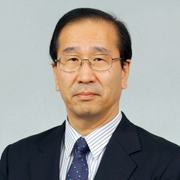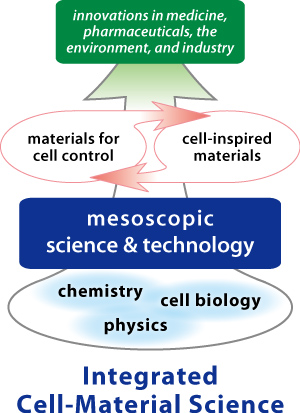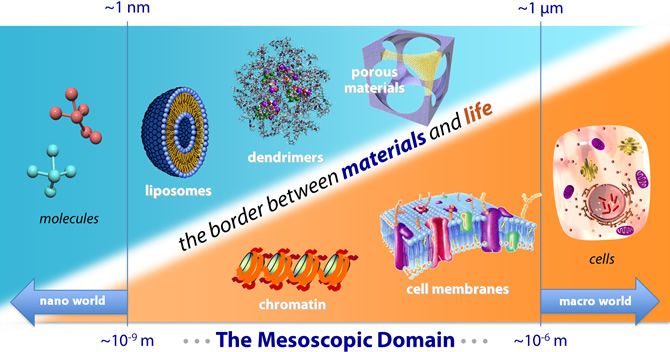Monthly Archives: April 2014
Chemistry of Life – WATSON & CRICK DNA STRUCTURE
by Prof. Motonari Uesugi, PhD – University of Kyoto
Institute for Integrated Cell-Material Sciences, Kyoto University
Vision for an Integrated Cell-Material Science

Susumu Kitagawa
Director
Institute for Integrated Cell-Material Sciences (iCeMS)
Kyoto University
January 2013
All cellular processes can ultimately be comprehended as chemical events, and such a chemical understanding of cells should allow us to mimic cellular processes using chemical materials. Our institute seeks to illuminate precisely such a chemical basis of cells, creating compounds to control processes in cells such as stem cells (materials for cell control) in addition to sparking cellular processes to create chemical materials (cell-inspired materials). Combining Kyoto University’s established strength in cell biology, chemistry, and physics to delve deeply into the mesoscale world lying at the boundary of materials and life, we are making a concerted effort, through interdisciplinary research, to ultimately create a new research field ofintegrated cell-material science.

Efforts to explain cell functions using chemistry are not new. Biochemistry, for instance, uses proteins as a starting point in attempting this at a molecular level, and molecular biology, while also focused on molecules, takes a DNA-based approach. And in their own ways, both methods have yielded significant innovations in pharmaceuticals and biotechnology.
Meanwhile, cell biology has also seen substantial success by considering the cell as a whole, most notably in research related to embryonic stem (ES) cells and induced pluripotent stem (iPS) cells, which are beginning to make an impact on the biomedical industry.
Our institute seeks a middle ground: between the large, whole-cell approach of cell biology, and the small, protein and DNA approaches of biochemistry and molecular biology. We call this the mesoscopic realm, lying between a few tens and a few hundreds of nanometers, on the border between materials and living matter. Investigating this boundary region, we strive to explain the material-chemical basis of cells’ living functions, ultimately using materials to create facsimiles of these mechanisms.
A study of the melded boundary between cells and materials based on a fusion of cell biology, chemistry, and physics is our goal. We seek to be the best in the world, with the fruits of our international, interdisciplinary labors bringing nourishment and fresh ideas to research in industries as diverse as medicine and the environment.

Our efforts are focused on examining the following two questions:
(1) Can we describe mesoscopic cellular processes in terms of chemistry?
Cells sustain life through properties of self-assembly and cooperative interactions among nearly countless chemical materials, moving ceaselessly in space and time. Broadening our scope beyond the narrow confines of nanoscale molecular interactions, we find it necessary to take a wider, mesoscopic view of molecular complexes. To accomplish this, we are pursuing the development of advanced imaging technologies and modeling, and physical and chemical technologies to dissect complex cellular events. We plan to focus on the following three areas:
- Gene Expression Control in Stem Cells, such as a mesoscopic understanding of gene expression in cellular reprogramming and differentiation, and the development of materials to control such expression.
- Organized Functions on the Cell Membrane, such as a mesoscopic understanding of mechanisms controlling channels and transporters, and the development of materials to control such systems.
- Biogas Control, such as a mesoscopic understanding of mechanisms involving gsases in living systems, and the development of porous materials for cellular control using such gases.
(2) Can we reproduce mesoscopic cellular structures with materials, and manipulate them?
Renowned physicist Richard P. Feynman once wrote: “What I cannot create, I do not understand.” In other words, only in the process of creation can we achieve true understanding.
In this spirit, our institute aims to replicate mesoscopic cellular functions with designed materials (cell-inspired materials). This should be possible once a full understanding of such cellular processes (as described above) has been achieved. We therefore simultaneously advance analysis and synthesis, applying the resulting higher level of knowledge to further research, such as in the proposed creation of the following chemical materials:
- Membranes for Cell Membrane Functions, such as the development of materials based on a mesoscopic understanding of the complex balance and interaction of processes on the cell membrane.
- Energy Storage in Cells, such as the creation of mesoscopic materials mimicking living systems’ abilities to sort and store energy bearing ions and molecules, and materials to unlock the energy storage potential of carbon dioxide and nitrogen gas.
Lifting lemon: Physics to go
Ingredients:
– slice of lemon
– four matches
– pint glass
– ashtray
– water
Instructions: Pour water into the ashtray until the water is ~1cm deep. Push three matchsticks into the slice of lemon, in the shape of a triangular pyramid, with the match heads together at the top point of the pyramid.
Place the lemon and matchsticks in the centre of the ashtray, so that they float on the water. Light the fourth match and use it to light the other three together. Invert the pint glass over the lemon and matches, letting it sit inside the ashtray or frisbee! Watch as the lemon slice magically levitates within the pint glass!
The Student as a Volunteer: Actions & Vision
Τhe Psychology Department of the Hellenic American College, in cooperation with Hellenic American University (Manchester, New Hampshire, USA) organizes the 3rd one-day-event for volunteerism entitled “The Student as a Volunteer: Actions and Vision”.
Following two previous successful events on volunteerism entitled “Care Means Action” and ”The ABC’s of Volunteer Recruitment”, the 3rd volunteerism event entitled “The Student as a Volunteer: Actions & Vision” is being organized so as to familiarize the public with the idea of volunteerism at schools, its potentials, benefits, and possible problems that may arise.
The one-day-event hold on Friday, April 11th, 2014, at the Auditorium of the Hellenic American Union (Massalias 22, Kolonaki).
Hellenic American Educational Foundation – Psychiko College IB Students presented 2 CAS projects in the context of “The Moral Dimension of Volunteerism in the International Community”. Speeches are in Greek.

Scientists Create an Unprecedented Map of the Developing Human Brain
at Wired By Greg Miller 04.02.14
The red and green brain slice (left) illustrates activity levels for a single gene. The multicolor slice (right) is a reference atlas, with different colors corresponding to different anatomical zones. Image: Miller et al., Nature
Scientists released the most detailed map ever made of the fetal human brain today. It contains a massive amount of information about gene activity at a crucial time in development — just as the cerebral cortex is developing. The scientists believe it holds important clues about the biological origins of disorders like autism, as well as insights into what makes the human brain unique.
Halfway through gestation, a human brain could fit in the palm of your hand. But it’s around this time that the cortex, which is responsible for many of our cognitive capabilities, is starting to take shape, says neuroscientist Ed Lein of the Allen Institute for Brain Science in Seattle, who led the new study.
To build the new atlas, Lein and colleagues constructed the map from four fetal brains obtained through a tissue bank. They sliced each one into about 3,000 ultra-thin sections. They used dyes and genetic markers on some of those slices to create a reference atlas. On other slices, they used microscopes equipped with laser beams to snip out tiny bits of tissue for genetic tests. The team looked at the activity level of about 20,000 genes, and they report their findings today in Nature.
There’s no doubt the fast pace of technology is making these massive datasets easier and faster to compile. But the promise of meaningful advances in understanding the brain and disorders of the brain won’t be delivered overnight. Even in this new era of Big Neuroscience, that’s still the hardest part.
The researchers have only begun to delve into this deep dataset, but Lein says they’ve already found some interesting things. For example, 34 genes whose sequences differ in interesting ways between humans and other primates appeared to be especially active in the developing frontal cortex. This is a region that’s relatively large in humans and thought to be especially important for social behavior, planning for the future, and other cognitive skills that humans excel at compared to many other species.
The team also investigated 78 genes identified in previous studies on autism and found that they appeared to be enriched in newly generated neurons in the cortex. “It tells you that the maturation of those neurons is where you want to look” for clues to the biology of autism, Lein said. (How that might fit with the recent finding of abnormal patches of cortex in the brains of autistic children — reported by Lein and colleagues last week — isn’t yet clear).
The atlas is just the latest released by the Allen Institute, whose previous efforts include atlases of gene activity in the adult human brain, as well as the adult brain and developing mouse brain. In another paper today in Nature, they report a detailed map of neural connections in the mouse brain.
MTH1 The story – revolutionary anti-cancer approach
The Helleday Laboratory proudly presents a novel concept of treating cancer, based on a general non-oncogene addition in cancer cells. The new concept is that cancer cells are killed by their own high level of intrinsic oxidative stress, not present in normal cells. We target the MTH1 protein required to prevent oxidative stress in cancer to become DNA damage. Normal cells have low level of oxidative stress and don’t need the MTH1 protein. See how the concept works!
Learn more about MTH1 and our revolutionary anti-cancer approach here: http://www.helleday.org


